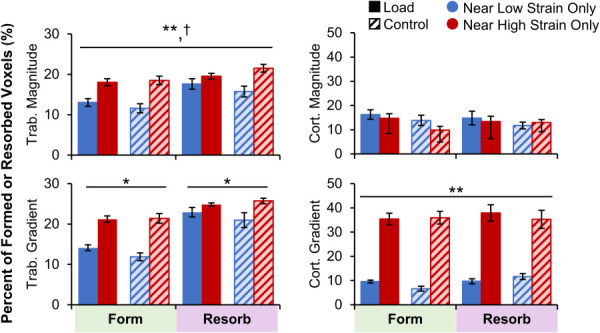Fig. 7.

Percent of trabecular (left) and cortical (right) formation and resorption sites near very high or very low strain magnitude (top) and gradient (bottom) elements for the load (n = 11) and control (n = 10) groups. Data presented as group means (error bars: SEM). *Given significant strain by adaptation interaction, indicates significant difference between very low and very high strain within formation or resorption for both groups. **Indicates significant main effect of strain level (very high versus very low). †Indicates significant main effect of adaptation type (form versus resorb).
